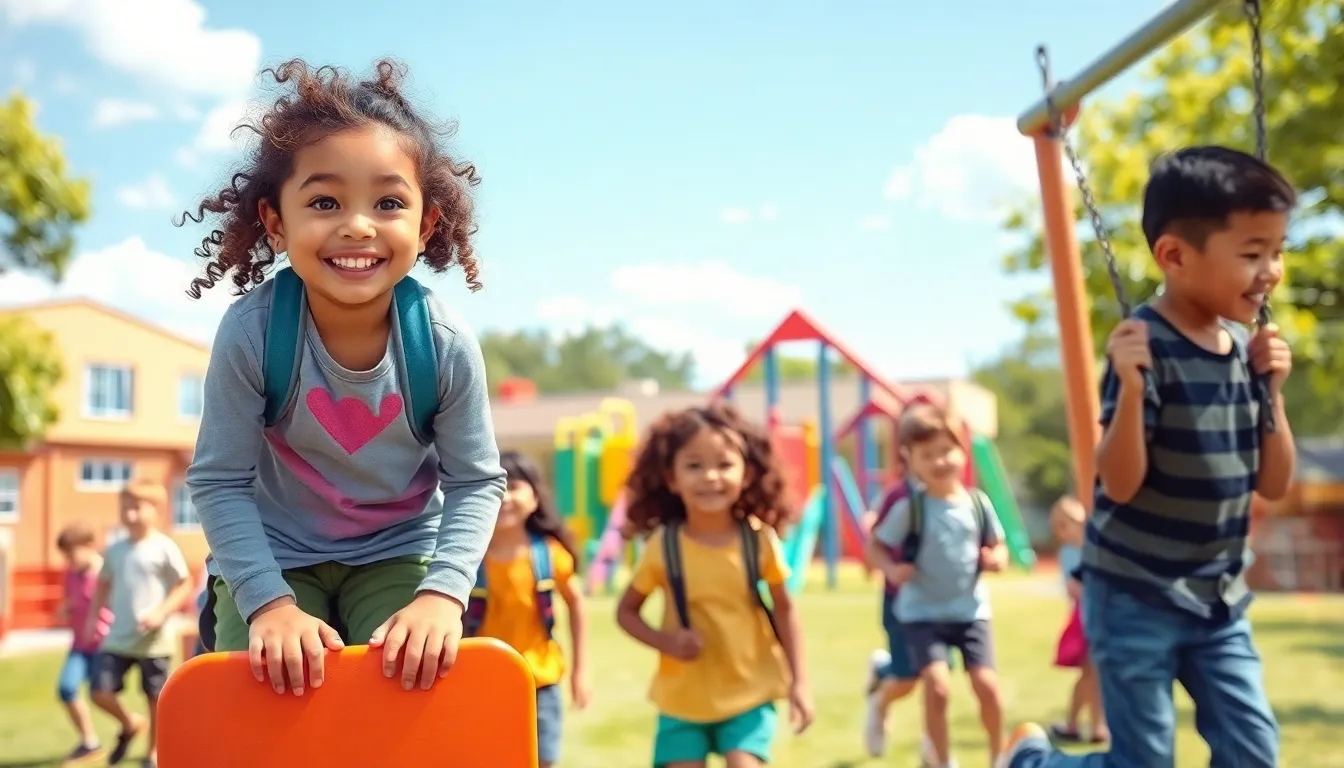Finding the perfect primary school nearby can feel like hunting for buried treasure. With so many options, it’s easy to get lost in the sea of choices. But fear not! The right school is just around the corner, waiting to unlock your child’s potential and ignite their love for learning.
Table of Contents
ToggleOverview of Primary Schools
Primary schools play a crucial role in a child’s early education, laying the foundation for future academic success. These institutions cater to children typically aged 5 to 11, offering a structured curriculum that fosters both cognitive and social development.
Many primary schools emphasize a balanced education, incorporating subjects like math, science, language arts, and art. Each subject aims to develop critical thinking skills and creativity. Sports and physical education also contribute to students’ overall well-being, promoting teamwork and health awareness.
Location significantly influences the choice of primary school. Parents often seek schools within a few miles from their residence to ensure ease of transportation. The proximity allows for smoother daily routines and minimizes travel time.
Curriculum differences can impact decisions. Some schools adopt traditional teaching methods, while others focus on progressive educational philosophies. This diversity allows parents to select an environment that aligns with their educational values and goals for their children.
Extracurricular activities enrich the school experience. Many primary schools offer clubs, sports teams, and after-school programs, encouraging children to explore their interests and develop new skills. This variety fosters socialization and builds friendships.
Community involvement can also enhance the educational experience. Schools that engage with families often see greater student success, as collaboration strengthens the connection between home and education. Parents are encouraged to participate in school events and volunteer opportunities, enhancing the educational environment.
Considering these factors helps parents make informed decisions. Through research and visits to local schools, families can find the ideal primary school that meets their child’s needs. Each school offers unique programs and philosophies, ensuring a fit for various learning styles and preferences.
Importance of Local Primary Education

Local primary education significantly impacts children and communities. A strong foundation in early education leads to enhanced learning outcomes and social development.
Community Impact
Local primary schools play a vital role in building community connections. They often serve as a hub for families, fostering relationships among neighbors. Schools that engage with their communities create opportunities for family involvement, which benefits both students and parents. Local businesses often support these schools, enhancing the education experience through partnerships. Students benefit from learning about their community’s resources and history. Increased community involvement also correlates with higher student achievement and engagement, creating a supportive environment for academic success.
Accessibility for Families
Accessibility impacts how families choose primary schools. Parents prefer schools within a short distance from home, allowing for easier drop-offs and pick-ups. Proximity reduces travel time for families, making it simpler to participate in school events and activities. Schools that prioritize accessibility often consider factors like public transportation and safety. Convenient access encourages daily attendance and promotes engagement with education. When families find schools that are logistically accessible, they can invest more in their children’s educational journeys, leading to better outcomes.
Factors to Consider When Choosing a School
Selecting the right primary school involves several important factors that influence a child’s educational journey.
Curriculum and Extracurricular Activities
Curriculum choices often vary between schools. Some institutions focus on traditional subjects, while others embrace progressive teaching methods. A balanced education, covering math, science, language arts, and art, creates a strong foundation. Parents should also consider extracurricular activities, such as clubs and sports. These programs foster social skills and provide opportunities for teamwork. Schools that prioritize a variety of activities enrich the overall student experience. Each child’s learning style may thrive better in environments that match their interests and strengths.
School Ratings and Reviews
School ratings provide a snapshot of educational quality. Online reviews offer insights from fellow parents and students about their experiences. Analyzing ratings can help parents identify well-regarded institutions in their area. Consistent positive feedback often reflects a supportive learning atmosphere. Also, schools that engage with families frequently enjoy higher satisfaction levels among their communities. Parents should seek schools with proven track records in academic performance and student satisfaction.
Resources for Finding Schools Near You
Finding the right primary school nearby requires using various resources. Several options can simplify this process for parents.
Online Search Tools
Utilizing online search tools helps locate primary schools quickly. Websites like GreatSchools and Niche offer comprehensive databases of schools, complete with ratings and reviews. Users can filter results by location, curriculum, and available programs. Each platform provides insights into school performance based on standardized test scores and other metrics. Exploring individual school websites further reveals specific offerings and extracurricular activities. Understanding how schools engage with their communities can also shed light on their environments.
Local Education Boards
Local education boards serve as another essential resource for finding schools. These boards maintain updated information about all primary schools in a given area. Parents can access data regarding enrollment procedures, school policies, and academic performance. Meeting with education board representatives often clarifies specific questions or concerns. Schools may also host open houses or informational sessions through these boards. Engaging with officials can establish connections within the community and provide insights into the educational landscape.
Finding the right primary school nearby is a journey that can shape a child’s educational experience. With numerous options available it’s essential for parents to assess each school’s strengths and how they align with their child’s needs.
Prioritizing factors like location curriculum and extracurricular activities can lead to a well-rounded education. Schools that engage with families foster a sense of community that benefits everyone involved.
By utilizing available resources and conducting thorough research parents can confidently navigate the school selection process. The right choice will not only support a child’s academic growth but also enhance their enthusiasm for learning and social development.








